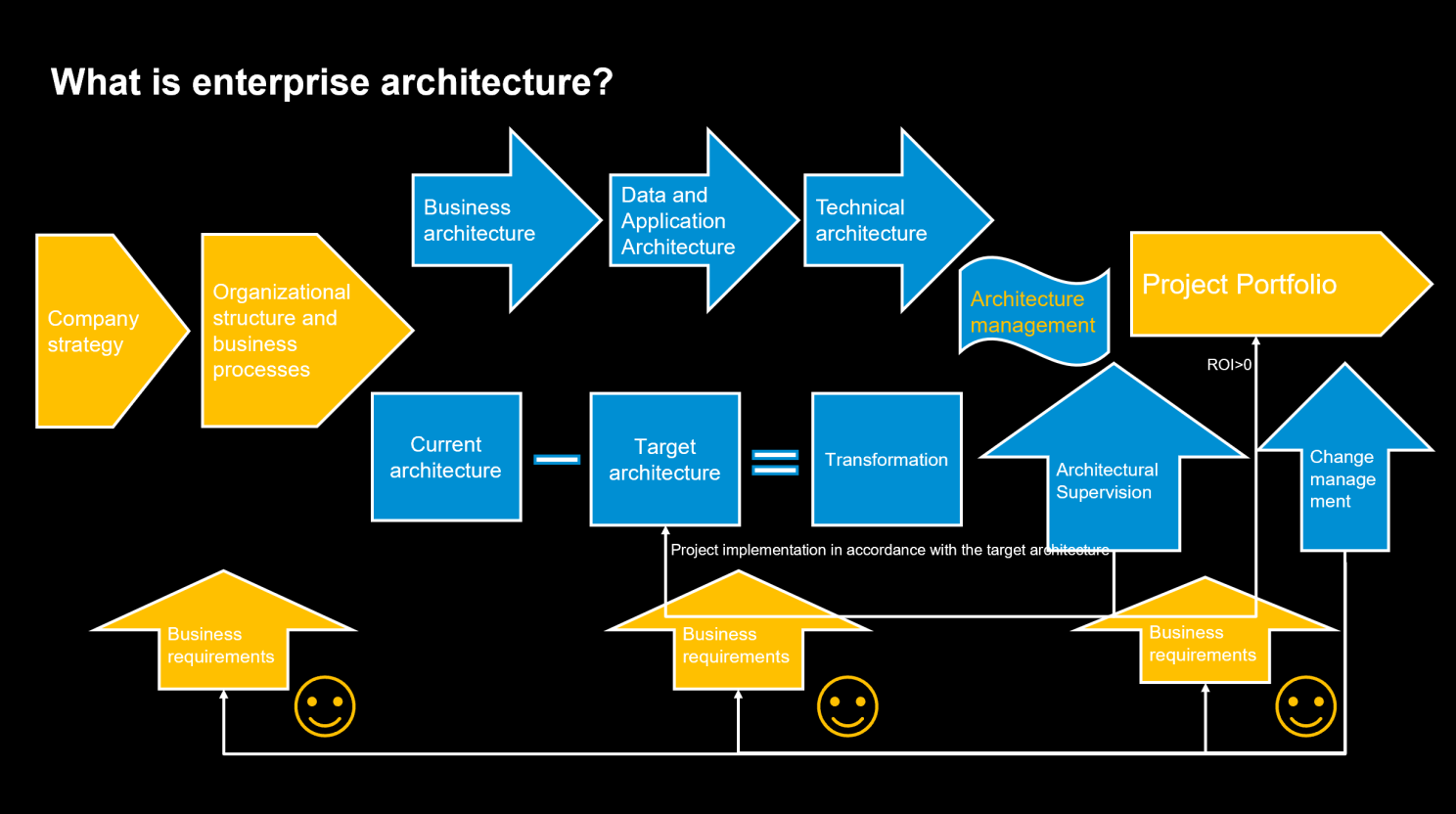Who is an Architect and What is Enterprise Architecture in the Context of Digital Transformation?
Many companies, chasing a fashionable digital transformation, start projects without proper preparation and fail in implementation. So what is Enterprise Architecture and who is an Architect?
In accordance with the TOGAF standard, Enterprise Architecture consists of 4 domains:
1. Business architecture, this is Architecture building blocks (ABB) development - business processes of any level (usually distinguish 4 levels of detail) are built and visualized in special tools, for example, such as ARIS or MEGA and others. The business architecture is being built based on the strategy of the enterprise, as well as the actual and target business processes. For this purpose, work business modelers, ARIS architects, and others
2. Based on ABB, Solution Building Blocks (SBB) are built. This is Application Architecture. Solution Architectors work here, usually, these are people with extensive experience in implementing IT systems as business analytics, who are well aware of systems and business processes. The main magic happens here, as the business integrates with IT systems.
3. At a more detailed level, Data Architects work, they determine the relationships between systems, which specific analytics (the fields in the DBMS tables of each system) will be stored in which system and how it will be connected with other systems (ETL procedures). All this is considered comprehensively and solves all integration problems. This architecture is called Data Architecture. Integration is the main headache of any CFO, CIO and other top managers who cannot receive data in one report.
4. The last architecture domain is Technical architecture. This is the hardware on which everything that is proposed (project portfolio) to be implemented will work. This is the work of basis specialists in infrastructure who count on sizing. They are now called IT Architects.
For all four domains, both current architecture and target architecture are built.
The Chief Architect, who must possess knowledge of business processes, applications, economics, and finance, is usually involved in the development of the target architecture, usually, this person should have at least 10 years of experience in real-life implementation in large companies. Otherwise, there will not be enough experience and projects may also fail due to the incompetence of the Chief Architect.
Based on all of this, the Chief Architect forms a portfolio of projects, calculates the total cost of ownership (TCO) of the entire portfolio and the ROI and NPV of each project and submits for approval to the Architecture Board, which usually consists of the top management of the company that decided to get involved in Digital Transformation.
In addition, the Chief Architect usually engages in the orchestration of all architects from all 4 domains and is essentially the right-handed CIO and CFO in all matters.
Also, according to the Togaf ADM (Architecture Development method) cycle, the Chief Architect carries out Architectural supervision of the implementation of the project portfolio, in terms of compliance with the Target Architecture.
The architecture is being built according to Agile since at each stage of the ADM cycle it is necessary to take into account the requirements of the main stakeholders and the Change manager (CMG) and the project administrator (PMO) should also be responsible for this.
The Chief architect, who also uses Change management and Project management tools in his work, is responsible for interacting with the coalition of project sponsors.
The maturity of the processes of architecture in many companies is not at such a high level, so this profession is not yet known to everyone.
We need to understand that digital transformation is a change of people (change management), processes, technologies, but nothing will go properly without architecture. Because transformation is there is nothing but a transition from the current state to the target. The company must have a clear vision of the target architecture.
Here you can imagine three united triangles (people, processes, technologies) and architecture - this is the wheel that allows digital transformation to go along the target path.

#EnterpriseArchitecture #Architect #DigitalTransforamation #TOGAF #ProjectManagement #ChangeManagement #agilemethodologies
strategy, architecture, business, experience, TOGAF, work, sap, architecturebuildingblock, solutionbuildingblock, analytics, targetingoperatingmodel, digitaltransformation, data